Search
- Page Path
-
- HOME
- Search
- Original Article
- Ciclesonide shows a lung-protective effect in neonatal hyperoxia-exposed rats
- Victoria Mielgo, Miguel A Gomez-Solaetxe, Lara Olazar, Begoña Loureiro, Carmen Rey-Santano
-
Background: Bronchopulmonary dysplasia (BPD), a chronic lung disease primarily observed in premature infants, is attributed to a lung injury–repair imbalance. Studies of postnatal corticosteroids have failed to identify clear candidates to help alleviate high BPD rates without risks or adverse effects.
Purpose: This study aimed to assess whether the systemic postnatal administration of an alternative glucocorticoid, ciclesonide, could attenuate alterations in lung structure and right ventricular hypertrophy in a... -
DOI: https://doi.org/10.3345/cep.2025.01137 [Accepted]
- Comparative analysis of goal attainment for helmet therapy versus conservative management for positional plagiocephaly in infants
- Bjoern Vogt, Ariane Deutschle, Gerog Gosheger, Adrien Frommer, Andrea Laufer, Henning Tretow, Robert Roedl, Gregor Toporowski
-
Background: Positional plagiocephaly (PP) is a common cranial asymmetry of infancy. Its treatment options include conservative management and helmet therapy. However, the efficacy of each, particularly at achieving a normal cranial shape, remains uncertain.
Purpose: This study aimed to compare the efficacy of conservative management and helmet therapy for PP. Methods: We retrospectively analyzed 199 infants with PP treated in 2015–2024. A total of 72 patients with a... -
DOI: https://doi.org/10.3345/cep.2025.01102 [Accepted]
- Review Article
- Neonatal ichthyosis-sclerosing cholangitis syndrome caused by a novel CLDN1 mutation: a case report and literature review
- Upasana Ghosh, Ankit Agrawal, Varunvenkat M Srinivasan, Rani Manisha, Umesh Shukla, Vikas Jain, Mayank Nilay, Harish Kumar
-
Neonatal ichthyosis-sclerosing cholangitis syndrome (NISCH) is an autosomal recessive disorder characterized by cholestasis, generalized ichthyosis, alopecia, and dental anomalies. As this is a rare syndrome, here we present a case caused by a novel mutation followed by a literature review of all published cases. This retrospective review includes all original articles on the clinical profiles of all 37 cases published through December 2024 using a PubMed search. The... -
DOI: https://doi.org/10.3345/cep.2025.00906 [Accepted]
- Original Article
- Less invasive surfactant administration versus intubationsurfactant- extubation: a single-center retrospective study
- Jithin CS, Nalina A, shashidhar A, Suman Rao PN
-
Background: In recent years, minimally invasive methods have been increasingly utilized for surfactant administration in spontaneously breathing preterm infants with respiratory distress syndrome (RDS) managed with nasal continuous positive airway pressure owing to their feasibility and association with improved respiratory outcomes. However, data are limited from developing countries on the use and effectiveness of these techniques.
Purpose: The primary objective of this study was to evaluate the effect of... -
DOI: https://doi.org/10.3345/cep.2025.00332 [Accepted]
- Review Article
- Bridging the gap: autism spectrum disorder in children in the United States and worldwide: a narrative review
- Sandhya J Kadam, Malika Goel
-
Autism spectrum disorder (ASD) is a neurodevelopmental condition characterized by difficulty with communication and social interactions as well as restricted or repetitive behaviors. Over the last few decades, the prevalence of ASD has increased globally, with major differences in reporting, diagnosis, and interventions between developed and developing countries. The United States (U.S.) has seen a sharp rise in diagnosed ASD cases, with a current prevalence of approximately 1... -
DOI: https://doi.org/10.3345/cep.2025.00969 [Accepted]
- Original Article
- HLA‒B*58:01 and skin reactions in pediatric hematology and oncology patients treated with allopurinol
- Parisa Maneechai, Cholada Ratanatharathron, Jassada Buaboonnam, Kleebsabai Sanpakit
-
Background: Allopurinol is widely used to prevent hyperuricemia in patients with tumor lysis syndrome. However, its use can trigger severe cutaneous adverse reactions (SCARs) with a mortality rate of approximately 11.39%. The human leukocyte antigen (HLA)–B*58:01 genotype is a major risk factor for SCARs. Although most studies to date have examined HLA–B*58:01 in Thai adults, data on pediatric patients are limited.
Purpose: Here we aimed to evaluate the... -
DOI: https://doi.org/10.3345/cep.2025.01032 [Accepted]
- Review Article
- Continuous glucose monitoring in Korean pediatric patients with type 1 diabetes: current landscape and clinical implications
- Hwa Young Kim, Jaehyun Kim
-
Continuous glucose monitoring (CGM) has become a key component in the management of pediatric type 1 diabetes mellitus (T1DM) since it offers real-time glucose data that facilitate tighter glycemic control and reduce acute complications. Accumulating evidence and international guidelines highlight the clinical efficacy, safety, and feasibility of CGM use in children, particularly those with high adherence. Regular CGM use is associated with significant reductions in glycated hemoglobin, fewer hypo-... -
DOI: https://doi.org/10.3345/cep.2025.01522 [Accepted]
- Original Article
- Clinical outcomes and healthcare utilization of hospitalized children with influenza versus COVID-19
- David Chun-Ern Ng, Chuin-Hen Liew, Kah Kee Tan, Joanne Pereira, Muhammad Ihsan Roslan, Xiang Lin Cheng, Hui Yi Lim, Farah Nuruliayana A.Nazri, Asuwani Maran, Wan Fei Wong, Yasothai Chandran, Syaniza Shaharudin, Pon Ling Lau, Naveen Nair Gangadaran, Marlindawati Mohd Ali
-
Background: Influenza and coronavirus disease 2019 (COVID-19) are major causes of pediatric respiratory illness with overlapping clinical features but potentially differing impacts on healthcare utilization and outcomes.
Purpose: To compare the clinical presentations, healthcare resource utilization, and outcomes of children hospitalized with influenza and COVID-19 and address the gaps in pediatric data from Southeast Asia. Methods: This retrospective observational study included children aged ≤12 years hospitalized with laboratoryconfirmed influenza or... -
DOI: https://doi.org/10.3345/cep.2025.00759 [Accepted]
- Editorial
- Basic Research
- Stem cell mining: urine cells to biobanking
- Yong Joo Ahn
- Clin Exp Pediatr. 2025;68(10):761-762. Published online September 24, 2025
-
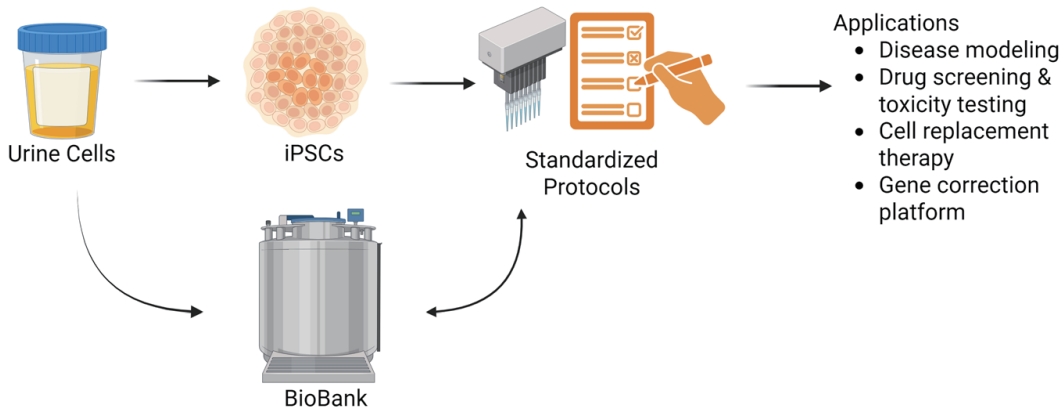
· A safe and accessible source of somatic cell generating induced pluripotent stem cells (iPSCs) in pediatric neurogenic disorders
· A noninvasive and simple method for isolating urine cells, which can effectively reprogram into pluripotent stem cells using episomal vectors
· Establishing a urine-derived iPSC bank as a reliable and scalable resource for disease modeling, therapeutic testing, and personalized medicine in pediatric neurogenic disorders.
- Review Article
- General Pediatrics
- Impact of screen exposure during pediatric ages including multifaceted aggravating factors: a literature review
- Daniel González-Pérez, David Sebastián Huertas-Moreno, Manuela Granados-Pinilla, Sofía Hernandez-Rojas, Laura González-Rincon, Geraldine Hurtado-Garcia, Simón Grisales-Calle, María José González-Mariño, Luz Dary Gutierrez-Castañeda, Jhon Camacho-Cruz
- Clin Exp Pediatr. 2025;68(10):751-760. Published online September 24, 2025
-
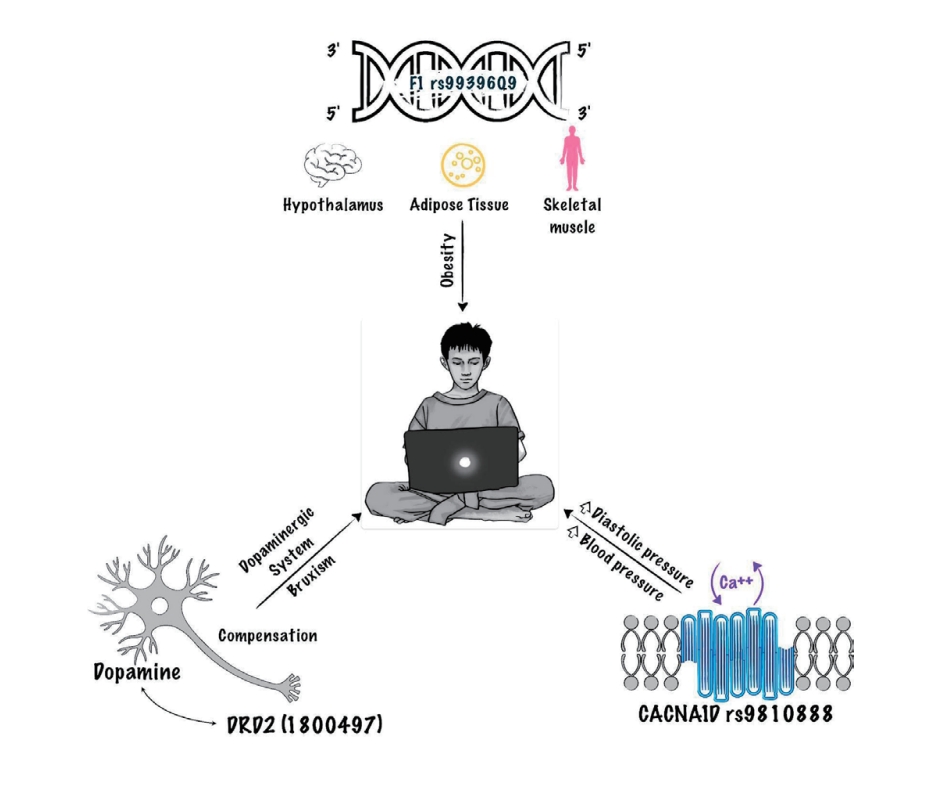
Excessive screen time in children is linked to obesity, overweight, sedentary behavior, depression and mood disorders, myopia, behavioral changes, sleep disturbances, attention deficit hyperactivity disorder, among others. Polymorphisms in genes like FTO, CACNA1D, and DRD2 could further increase these risks. Implementing strategies such as limiting screen use, creating screen-free zones, and monitoring content is essential to mitigate adverse physical and mental health effects in the pediatric population.
- Perspective
- General Pediatrics
- Parenting principles to combat attention-deficit/hyperactivity disorder and form resilient young minds
- Jandy Le, Sandhya J. Kadam
- Clin Exp Pediatr. 2025;68(10):838-841. Published online September 22, 2025
-
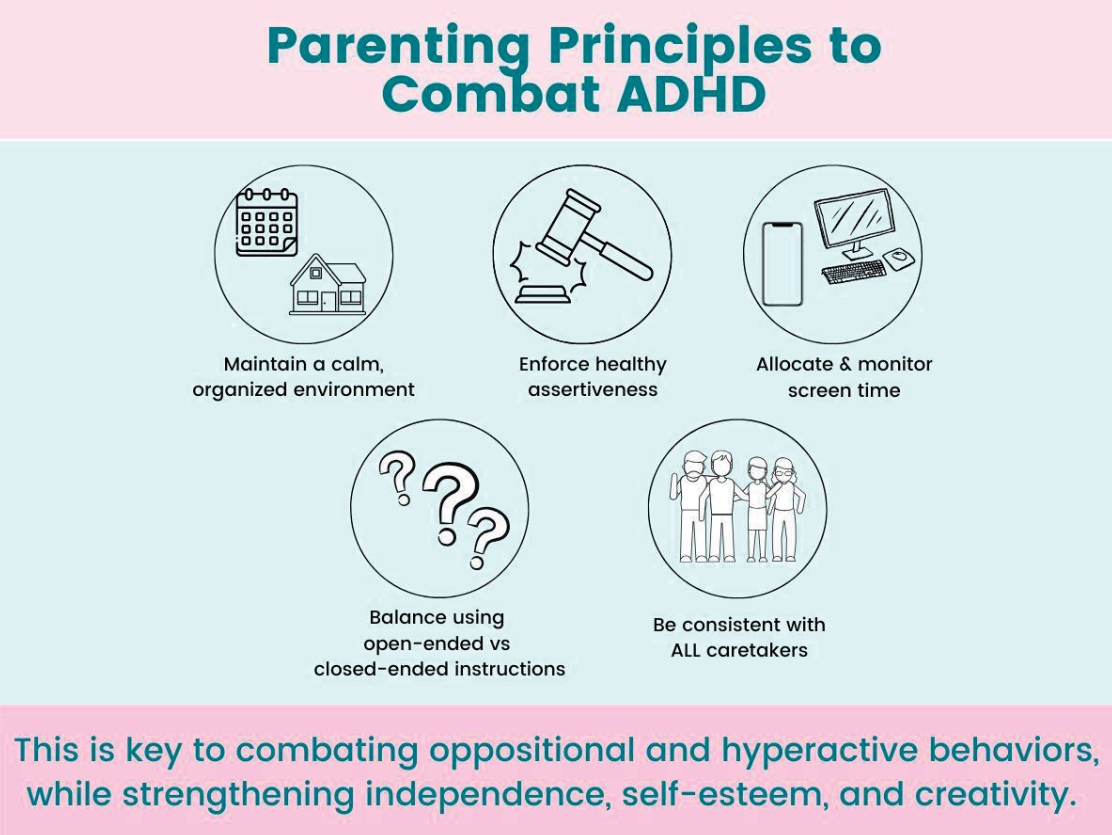
The prevalence of attention-deficit/hyperactivity disorder, conduct disorder, and other related behavioral problems is increasing among children, likely due to less interaction with their parents and the real world and more time spent on screens, on social media, and in the virtual world. This article highlights several simple, basic parenting principles to facilitate the growth of healthy, resilient minds and combat the symptoms of opposition, hyperactivity, and distractibility.
- Original Article
- Other
- Impact of thyroid hormones and serum endothelin levels on pediatric asthma control: a case-control study of an Indian population
- Murugaiyan Sathishbabu, Sathiya Ramasamy, Niranjjan Ramachandran, Soundararajan Palanisamy, Arulvijayavani Subramaniam
- Clin Exp Pediatr. 2025;68(10):831-837. Published online September 22, 2025
-
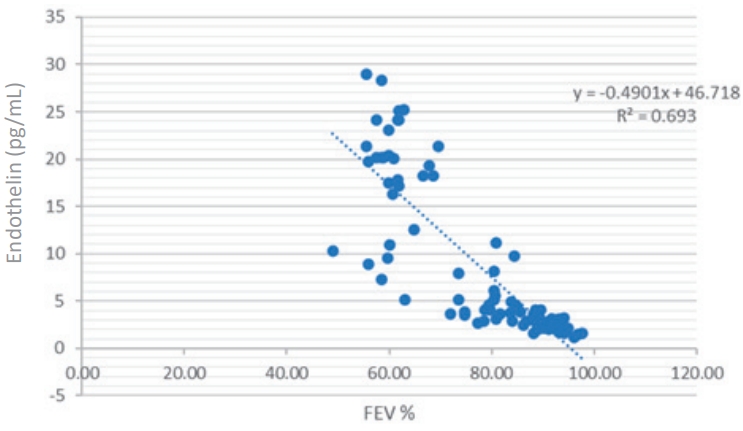
Question: What are the roles of thyroid hormones and endothelin in South Indian children with asthma?
Finding: Thyroid hormone and endothelin levels were significantly elevated in South Indian children with asthma; poorly controlled cases exhibited the highest levels. Elevated thyroid-stimulating hormone and endothelin levels were correlated with asthma severity.
Meaning: Serum endothelin is a potential surrogate marker for asthma severity that could aid the assessment and management of childhood asthma.
- Cytokine profile of Post–cardiopulmonary bypass in children
- Kantara Saelim, Kanokpan Ruangnapa, Jirayut Jarutach, Pongsanae Duangpakdee, Smonrapat Surassombatpattana, Pharsai prasertsan
-
Background: Open cardiac surgery involving cardiopulmonary bypass (CPB) triggers a systemic inflammatory response that significantly affects clinical outcomes. However, the dynamics and specific roles of cytokine release after CPB in the pediatric population remain unclear.
Purpose: To evaluate the dynamics of cytokine levels and their association with low cardiac output syndrome (LCOS)-related outcomes. Methods: A prospective observational cohort study was conducted of 32 children who underwent elective open cardiac surgery... -
DOI: https://doi.org/10.3345/cep.2025.00836 [Accepted]
- Assessment of natural killer cell subpopulations in pediatric patients with transfusion-dependent β-thalassemia major
- Fathia Elbassal, Mohamed Soliman, Nourhan Mohamed, Mai El-Hamid, Hanan El-Sheity
-
Background: Iron overload is a hallmark complication in patients with transfusion-dependent β-thalassemia major, primarily resulting from ineffective erythropoiesis, repeated blood transfusions, and increased gastrointestinal iron absorption. This iron accumulation, reflected in elevated serum ferritin levels, has been implicated in immune dysregulation. Natural killer (NK) cells are a pivotal component of the innate immune system, known for their cytotoxic activity and... -
DOI: https://doi.org/10.3345/cep.2025.01046 [Accepted]
- Effectiveness of Kinder Lebensqualität Fragebogen (KINDL) and Children’s Somatic Symptom Inventory-24 (CSSI-24) for measuring postacute sequelae of COVID-19 in children: a diagnostic validation study
- Lawrence Shih-Hsin Wu, Pei-Chi Chen, Xiao-Ling Liu, Shu-Tsen Liu, Chi-Hung Wei, Yu-Lung Hsu, Kai-Sheng Hsieh, Huan-Cheng Lai, Chien-Heng Lin, Chieh-Ho Chen, An-Chyi Chen, I-Ching Chou, Wen-Jue Soong, Hui-Ju Tsai, Chung-Ying Lin, Jiu-Yao Wang
-
Background: The postacute sequelae of coronavirus disease 2019 (PASC), also known as pediatric long coronavirus disease (COVID), can significantly affect the quality of life (QoL) of affected children. Currently, there are no standardized screening tools to identify high-risk children. The Kinder Lebensqualität fragebogen (KINDL) is a psychometric method for measuring QoL in children.
Purpose: This study used the KINDL questionnaire and... -
DOI: https://doi.org/10.3345/cep.2025.00983 [Accepted]
- Review Article
- Infection
- Recommendation for use of a long-acting monoclonal antibody to prevent respiratory syncytial virus infection in infants and young children
- Soo-Han Choi, Dong Hyun Kim, Jong Gyun Ahn, Ki Wook Yun, Byung-Wook Eun, Jin Lee, Jina Lee, Taek-Jin Lee, Hyunju Lee, Dae Sun Jo, Eun Young Cho, Hye-Kyung Cho, Young June Choe, Ui Yoon Choi, Yun-Kyung Kim; The Committee on Infectious Diseases of the Korean Pediatric Society
- Clin Exp Pediatr. 2025;68(10):742-750. Published online September 3, 2025
-
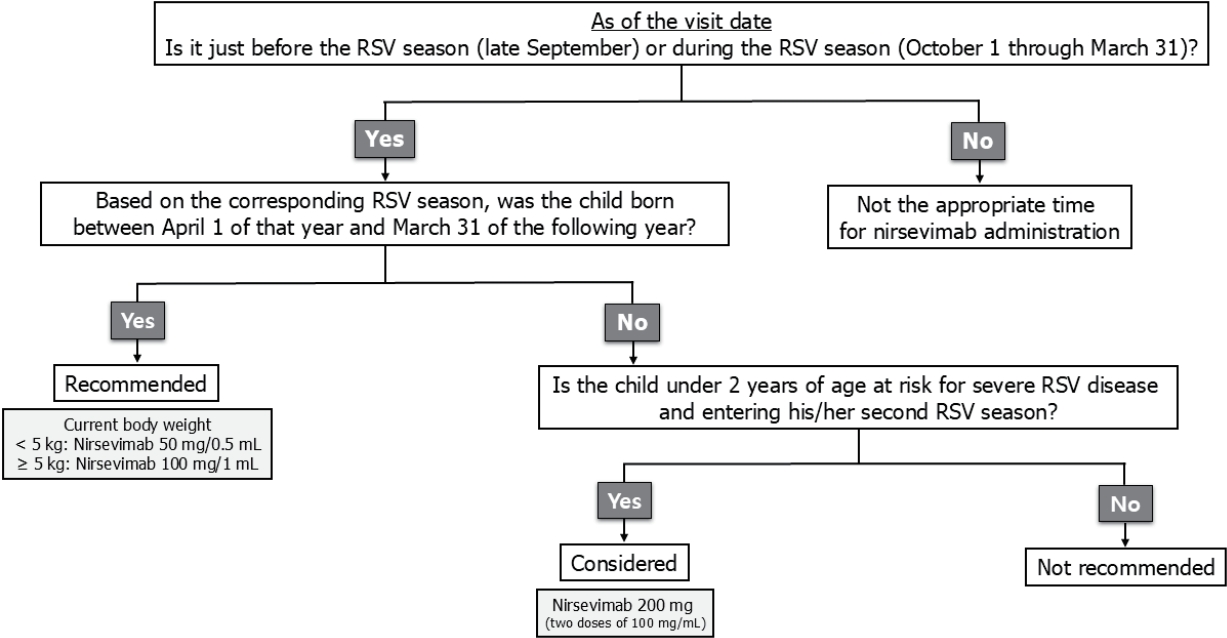
To prevent respiratory syncytial virus (RSV)-associated lower respiratory tract infections, a single dose of nirsevimab, a long-acting monoclonal antibody, is recommended for all neonates born during the RSV season (October to March) and all infants younger than 6 months old at the start of the RSV season. Nirsevimab should be administered shortly after birth to neonates and just before or early in the season to infants entering their first RSV season.
- Editorial
- General Pediatrics
- Artificial intelligence in pediatric healthcare: bridging potential, clinical practice, and ethical considerations
- Yoon Lee, Seohyun Hong, Dong Keon Yon
- Clin Exp Pediatr. 2025;68(9):652-655. Published online August 28, 2025
-

· Artificial intelligence (AI) holds transformative potential for pediatric healthcare, with applications spanning prevention, diagnosis, treatment, and follow-up across diverse subspecialties; however, ethical concerns, scarcity of pediatric- specific data, and limited funding remain significant challenges.
· International consensus on pediatric AI guidelines, expanding child-specific datasets, and incorporating explainable AI are essential to ensure safety and trust.
· Multicenter collaboration and increased investment can address these gaps, enabling equitable, reliable, and pediatric- centered AI solutions.
- Original Article
- Basic Research
- Linezolid mitigates tissue injury in experimental model of pediatric testicular torsion: TLR-4/MAPK/NF-κB involvement
- Moein Ghasemi, Abolfazl Basiri, Houman Kazemzadeh, Mohammad Amin Manavi, Seyed Mohammad Tavangar, Ahmad Reza Dehpour, Hamed Shafaroodi
- Clin Exp Pediatr. 2025;68(9):700-711. Published online August 26, 2025
-

Question: What pharmacological strategies can limit ischemia-reperfusion injury in pediatric patients with testicular torsion?
Finding: In a rat model of testicular torsion, linezolid reduced oxidative stress, inflammation, and tissue injury via the Toll-like receptor 4/mitogen-activated protein kinase/nuclear factor kappa beta pathway.
Meaning: Linezolid may offer a pharmacological approach to attenuate testicular damage in pediatric patients with testicular torsion, warranting further clinical investigation.
- Long-term epidemiological insights into rickets: a nationwide population-based retrospective study
- Chun-Hao Chu, Ying-Chuan Chen, Pei-Yao Liu, Chun-Chieh Hu, Yu-Lung Lin, Feng-Chih Kuo, Chieh-Hua Lu, Tzu-Ju Hsu, Yu-Tung Hung, Fuu-Jen Tsai, Chien-Ming Lin
-
Background: Rickets is a growth disorder that imposes a global health burden and causes disability in affected children. However, issues related to the clinical epidemiology and mortality risk of nutritional versus hereditary rickets have not been fully investigated in large population studies, particularly in Asia.
Purpose: This study aimed to investigate the nationwide incidence, demographic characteristics, and mortality-related risk factors of... -
DOI: https://doi.org/10.3345/cep.2025.00976 [Accepted]
- Fecal microbiome profiles in infants with biliary atresia versus nonbiliary atresia cholestasis: a pilot study
- Nur Azizah, Fadilah Fadilah, Silvia Werdhy Lestari, Muzal Kadim, Fithriyah Sjatha, Hanifah Oswari
-
Background: Cholestasis is characterized by disrupted bile flow and can lead to severe liver disease in newborns, of which biliary atresia (BA) is a common cause. The gut microbiome plays a crucial role in aggravating liver injury in BA and non-BA cholestasis. However, information is lacking regarding the differences in gut microbiome composition between patients with BA and non-BA cholestasis.
Purpose:... -
DOI: https://doi.org/10.3345/cep.2025.00563 [Accepted]
- Evolving treatment strategies for invasive Streptococcus pyogenes in children in the postpandemic era
- Laura Buricchi, Giuseppe Indolfi, Marco Renni, Elisabetta Venturini, Luisa Galli, Elena Chiappini
-
Background: Streptococcus pyogenes (group A Streptococcus [GAS]) is a common cause of bacterial pharyngitis and skin infections in children that can lead to severe and invasive GAS (iGAS) infections. The sudden acute respiratory syndrome coronavirus 2 pandemic coincided with an increase in iGAS cases, with emerging serotypes and risk factors like age, reduced postpandemic immunity, and viral coinfections. The treatment... -
DOI: https://doi.org/10.3345/cep.2025.00479 [Accepted]
- Gastroenterology
- Dual-strain probiotics Bifidobacterium bifidum and Lactobacillus acidophilus reverse gut dysbiosis in preterm neonates: a randomized controlled trial
- Setthawut Sittiwong, Pornthep Tanpowpong, Pisut Pongchaikul, Pracha Nuntnarumit
- Clin Exp Pediatr. 2025;68(10):763-771. Published online August 6, 2025
-
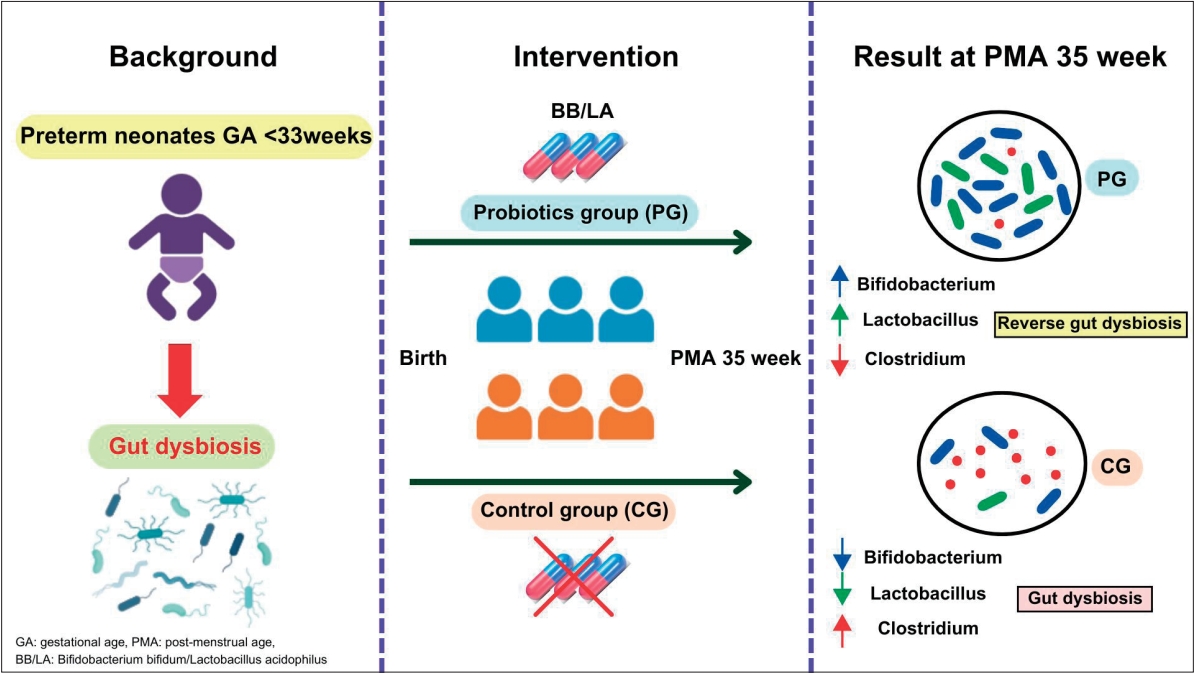
Question: Can probiotics BB/LA reverse gut dysbiosis in preterm neonates?
Finding: BB/LA supplementation induced more diverse beta diversity and increased relative abundances of Bifidobacterium, Lactobacillus and decreased relative abundance Clostridium.
Meaning: Early BB/LA supplementation could reverse gut dysbiosis in preterm neonates.
- Cardiology
- Unsustainable and overworked: unpacking the challenges faced by pediatric cardiologists and cardiac surgeons in Korea
- Soo In Jeong, GI Beom Kim, Sung Hye Kim, Jae Yoon Na, Hong Ju Shin, Sin Weon Yun, Lucy Youngmin Eun, Sang Yun Lee, Chang-Ha Lee, Kwang Ho Choi, Seul Gi Cha, Mi Young Han
- Clin Exp Pediatr. 2025;68(9):732-741. Published online August 6, 2025
-

Question: What are the key challenges affecting pediatric cardiologists and cardiac surgeons in Korea?
Finding: Excessive workloads, low procedural volumes, and legal risks contribute to high burnout. Regional disparities limit skill maintenance and threaten workforce sustainability.
Meaning: Targeted policies ensuring fair workloads, legal protections, and regional support are essential to stabilizing the pediatric cardiac workforce and maintaining high-quality care.
- Vasovagal syncope and postural orthostatic tachycardia syndrome in adolescents: transcranial doppler versus autonomic function test results
- Dong Won Lee
- Clin Exp Pediatr. 2025;68(9):673-679. Published online August 6, 2025
-

Question: Vasovagal syncope (VVS) and postural orthostatic tachycardia syndrome (POTS) are representative forms of neurally mediated syncope. What influences the occurrence of each?
Finding: Autonomic function test results did not differ, but cerebral blood flow during diastole on transcranial doppler differed between VVS and POTS.
Meaning: Differences in diastolic cerebral blood flow velocity play an important role in VVS and POTS.
- Evaluation of Bak and Bcl-Xl gene expression among pediatric patients with acute primary immune thrombocytopenia
- Amira Zaki Badawy, Samia Hassan Kandel, Iman Aly Ahmedy, Mahmoud Ahmed Elhawy, Sally Mohamed El-Hefnawy, Dina Fouad Sief El-Nasr Zidan, Hanan Hassan El-sheity
-
Background: Immune thrombocytopenia (ITP) is an autoimmune disorder characterized by a low platelet counts and an increased risk of bleeding. Moreover, the apoptotic mechanisms of platelets may influence their production and lifespan.
Purpose: To assess the involvement of apoptotic markers—specifically the B-cell lymphoma protein 2 family proteins Bak and Bcl-Xl in the pathogenesis of acute primary ITP in pediatric patients, and... -
DOI: https://doi.org/10.3345/cep.2025.00997 [Accepted]
- Serum copper and ceruloplasmin levels as biomarkers reflecting liver fibrosis in children with autoimmune hepatitis
- Salma Abdel Megeed Nagi, Mai Ibrahim Elashmawy, Amany E. Elashkar, Mohamed Zaeim Hafez, Ashraf A.E. Emara, Osama Mohammad Abdelhay, Albayoumi A.B. Fouda, Mohamed AbdelAziz Doma, Ahmad Mohamed Awad, Ahmed Mohammed Saba, Hesham Abdelrahman Ahmed, Ahmed Mohamed Gad Allah, Fatma Mahmoud Abdelraheem, Mohamed A. Gad, Mohamad A. Soliman, Tamer I. Abdalrhman, Khaled Hassaan Awad, Ismael A.K.M. El-lebedy, Mostafa M. Abdelnaser, Mohammed Z. Abdel Kareem, Marwa Fekry Hassan, Shymaa Sobhy Menshawy Khalifa
-
Background: Clinical, biochemical, histological, and immunological indicators are frequently used to diagnose autoimmune hepatitis (AIH), a chronic inflammatory liver disease affecting children. Wilson disease, which resembles AIH, is mainly evaluated using serum ceruloplasmin and copper levels. However, changes in these biomarkers have also been observed in AIH, raising the question of whether they could be useful for evaluating children with... -
DOI: https://doi.org/10.3345/cep.2025.01011 [Accepted]
- Success rates of conservative treatment and optimal surgical timing for pediatric chylothorax
- Pakwan Kaewchusen, Narumon Densupsoontorn, Supaluck Kanjanauthai, Puthita Saengpanit
-
Background: Pediatric chylothorax poses management challenges, with conservative treatment as the first-line approach and surgery reserved for persistent cases. However, data remain limited on factors related to conservative treatment success and optimal surgical timing.
Purpose: This study aimed to evaluate the success rate of conservative treatment, identify the associated factors, and determine the optimal timing for surgical intervention. Methods: We retrospectively reviewed... -
DOI: https://doi.org/10.3345/cep.2025.00598 [Accepted]
- Correspondence
- Nephrology (Genitourinary)
- Authors' reply: a commentary on “COVID-19 vaccine hesitancy among parents of children with systemic lupus erythematosus”
- Karnchanit Sausukpaiboon, Nuanpan Penboon, Pornpimol Rianthavorn
- Clin Exp Pediatr. 2025;68(8):626-627. Published online July 18, 2025
-
- Original Article
- General Pediatrics
- Liposomal SunActive versus conventional iron for treatment of iron-deficiency anemia in children aged 2–12 years: a prospective randomized controlled trial
- Wael A. Bahbah, Yasmin A.H.S. Younis, Hanan Salama Elbelouny, Asmaa A. Mahmoud
- Clin Exp Pediatr. 2025;68(8):608-615. Published online July 18, 2025
-
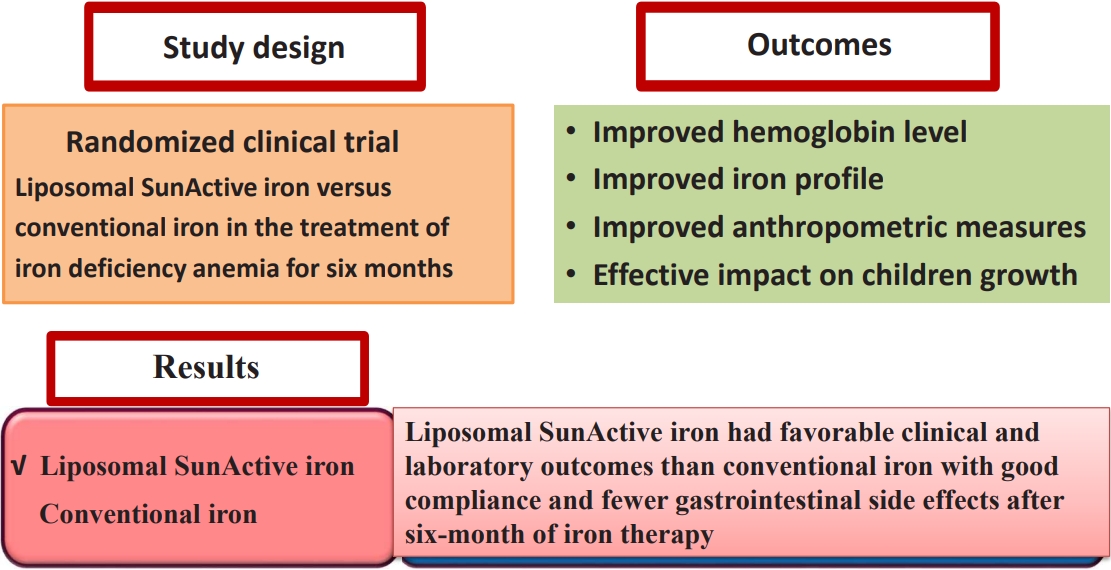
Background: Liposomal iron, a novel oral formulation of ferric pyrophosphate that demonstrates improved gastrointestinal absorption and bioavailability with fewer side effects than conventional iron, represents a significant advancement in the treatment of iron-deficiency anemia (IDA).
Purpose: To conduct an in-depth comparative study of liposomal SunActive and conventional iron supplements (iron polymaltose complex) for treating IDA in children aged 2–12 years Methods: This...
- Editorial
- Other
- Beyond the eye: a multidisciplinary perspective on managing pediatric myopia
- Eoi Jong Seo
- Clin Exp Pediatr. 2025;68(8):566-568. Published online July 18, 2025
-
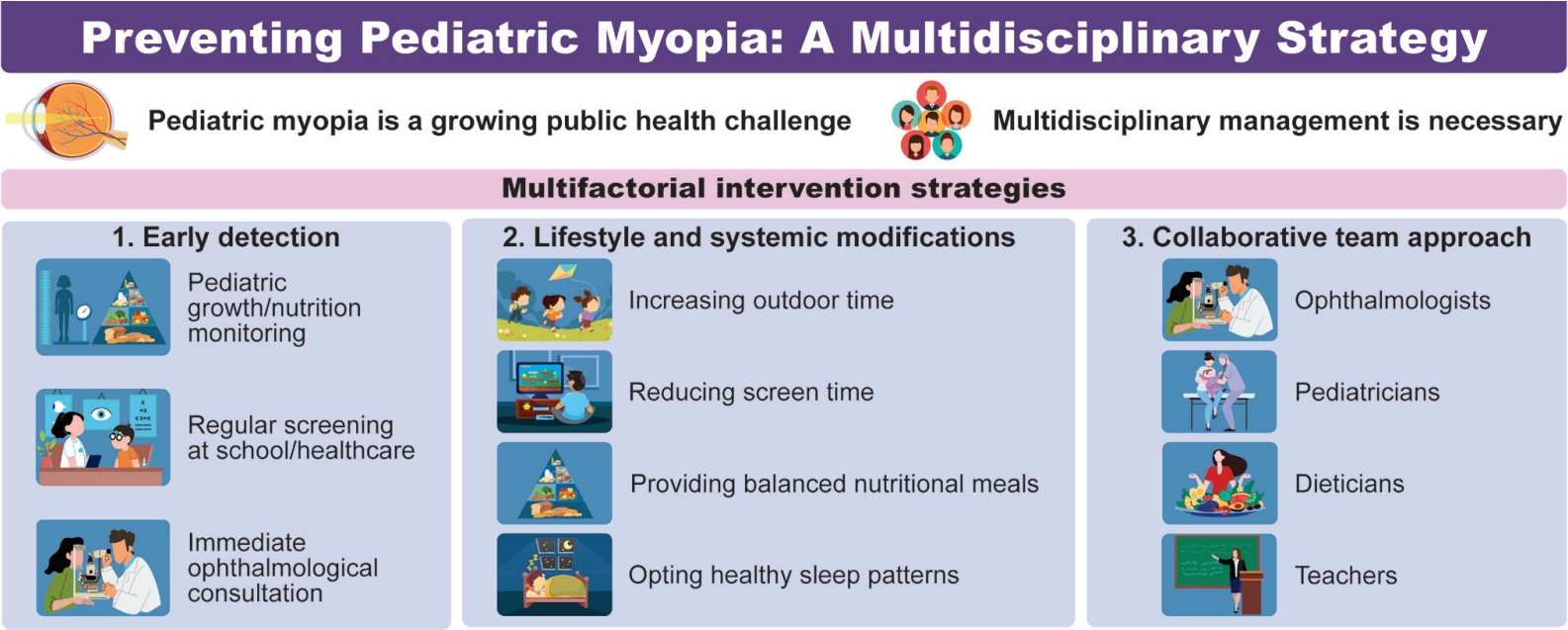
Myopia is a growing global public health concern because of its association with irreversible vision loss such as myopic traction maculopathy, rhegmatogenous retinal detachment, and glaucoma. The effective prevention of myopia in childhood requires a multidisciplinary approach that integrates ophthalmologic care with lifestyle, nutrition, and sleep interventions. Early detection through regular visual screening in schools and primary care settings and timely ophthalmology referrals are critical to preventing high myopia.
-

-
-
6.02024CiteScore98th percentilePowered by
-
Impact Factor3.6
-
- TOPICS
- ARTICLE CATEGORY
- Editorial Office
-
Korean Pediatric Society
#1606 Seocho World Officetel, 19 Seoun-ro, Seocho-ku, Seoul 06732, Korea
Tel: +82-2-3473-7306 Fax: +82-2-3473-7307 E-mail: office@e-cep.org
Clinical and Experimental Pediatrics is an open access journal. All articles are distributed under the terms of the Creative Commons Attribution NonCommercial License (http://creativecommons.org/licenses/by-nc/4.0/)
Copyright © 2025 by Korean Pediatric Society.











